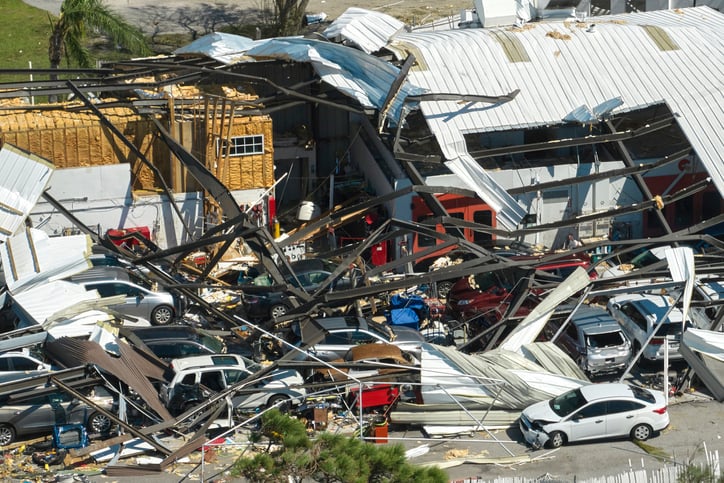
Editorial Note: This article was brought to you courtesy of Rose Morrison, managing editor of Renovated.com.
There were around 350 natural disasters across the U.S. in the past five decades, taking more than 5,000 lives. Almost every national newscast covers a weather event that harms or destroys homes, so why aren’t we rebuilding smarter?
Natural Disasters Will Only Get Worse
We can’t ignore the need to create stronger homes throughout the country. Severe weather is a major impact of ongoing climate change. Experts predict storms will continue to happen closer together, which could significantly strain the government, humanitarian organizations and the affected communities.
With a wide range of climates, each state and region has its own weather events to consider. Each year, millions of Americans have homes damaged to the point of significant repairs or rebuilding. From California’s earthquakes to New England blizzards, we need to prepare better to rebuild structures that can withstand these storms.
More than half of the people displaced by natural disasters want to rebuild instead of relocating their lives. However, it's vital to introduce the building materials and methods that can help their new home withstand future impacts. Each community deserves rebuilding strategies that best benefit their homes — and that’s not as complicated as you might think.
Protecting Homes From Natural Disasters
Choosing the right building materials is crucial in protecting homes from natural disasters. Though there are ways to armor homes against some storms, the best way to protect them is to construct them for internal strength instead of external barriers.
Rebuilding smarter saves a homeowner energy, money and possibly their life. Here are examples of how we could build back smarter from natural disasters and some reasons why it’s challenging.
Earthquakes
For a home to withstand an earthquake, it needs to redirect horizontal inertia. Making foundation changes can help homes survive these events.
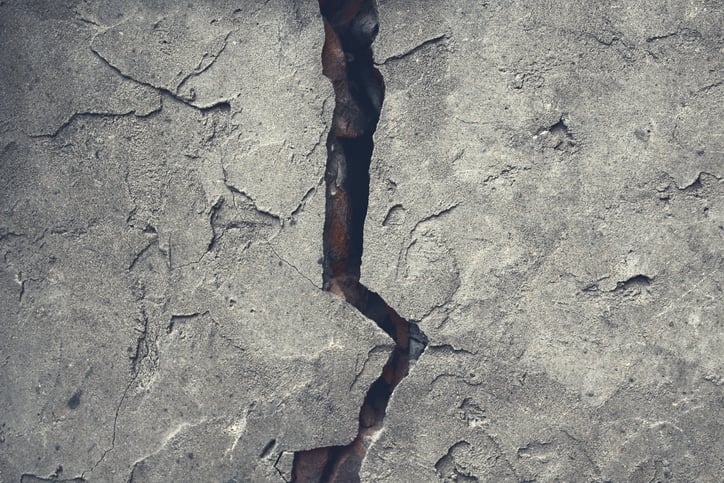
Base isolation is a building technique that keeps a building loose from its foundation. It stays secure but flexible enough to shift when inertial forces happen. That flexibility can prevent the structure from cracking.
Steel-reinforced concrete is a sturdy hybrid building material that can avoid crumbling during an earthquake. However, these building methods can add to construction costs that grants might not cover and homeowners are unwilling or unable to afford. For steel-reinforced concrete, you need a specialist contractor and builders who may be unable to tackle the rebuild.
Tornadoes
To resist tornadoes, buildings need to have reinforcement throughout their structures. Steel anchor bolts in concrete foundations can prevent buildings from being blown over. Shear walls also help brace the home from extremely high winds and roof trusses attached to walls can help a home stay together when hit by a tornado.

Even in the Midwest — where tornadoes are common — most homes can only withstand tornadoes at the bottom of the rating scale. This is often due to lackluster building codes and the perceived costs of these adaptations.
Hurricanes
Storm-resistant modular homes are fantastic solutions for communities that need hurricane protection. Manufacturers make these homes out of reinforced steel and concrete with asphalt or metal roofs to have the strength and flexibility to withstand hurricane-force winds, rain, flooding and debris. Some modular homes designed for storms are made from laminated wood or cork, with layers of plywood or insulated panels to withstand extremely high winds.
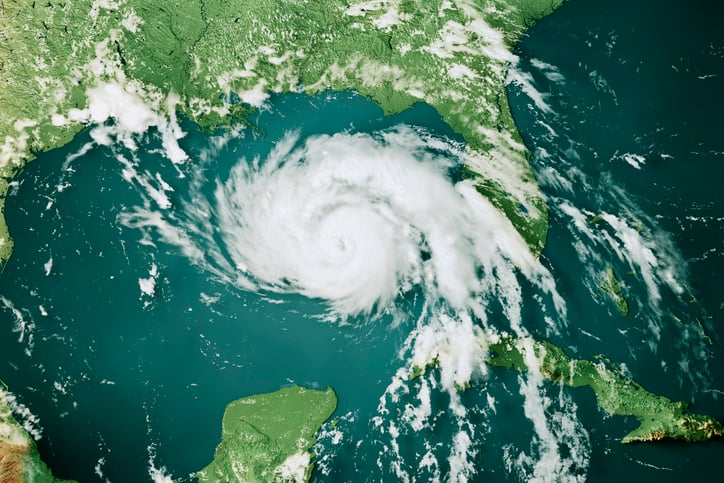
Storm-proof modular homes can cost more than other structures, with homes beginning at around $180,000 and going up to the high $300,000. There’s also a stigma around modular homes being cheaply made and not holding up. The truth is modular homes can last as long as stick-built and much longer in a hurricane-prone zone.
Wildfires
Insulated concrete forms (ICFs) are polystyrene blocks that fit together. Each is filled with concrete and the combination makes homes resistant to flames.
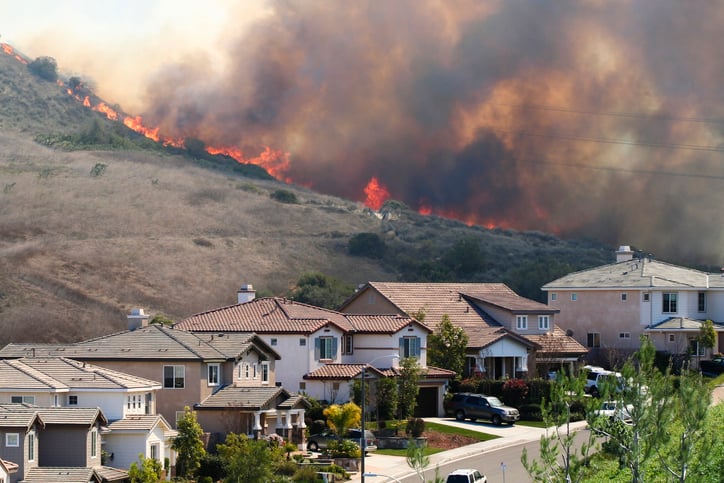
ICFs can reportedly withstand fire for up to four hours, providing families safety and time. The solid walls can prevent smoke from seeping through cracks and causing respiratory distress. Many builders in California and other wildfire-prone areas receive training to work with this material.
For many people, it comes down to aesthetics. ICF blocks can be unattractive and many don’t realize that with the right finishing touches, they look like traditional houses. Many have stucco, food or brick veneer siding, helping them camouflage with other homes across the U.S.
These homes can be complicated to build. While many builders have training, it takes a specialized contractor to ensure the project is taken care of and a team of builders to make it happen. After a disaster, it can be a complex process to navigate. Another misconception is ICF buildings are expensive, but they only cost around 3% more than traditional homes.
Floods
Two main strategies for building a flood-resistant home are distance and sealing. Houses with elevated foundations or on stilts allow water to travel underneath, sparing the main structure. You often see these designs along the coast, but they can benefit any area hit by severe flooding.
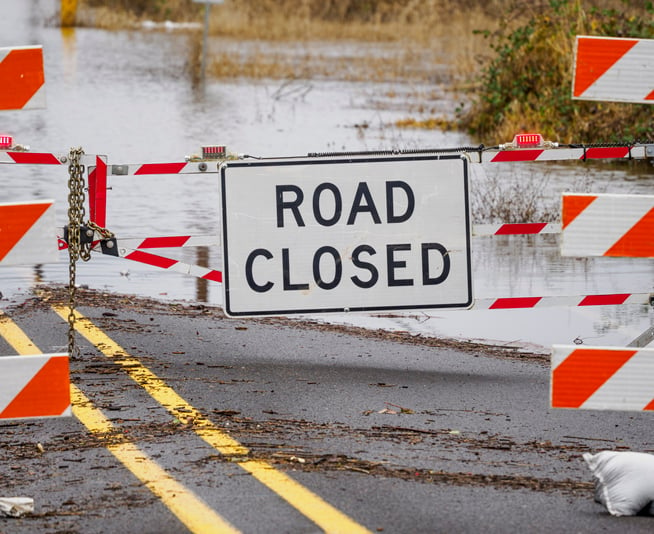
Another way to create distance is building a waterproof wall, which should be tall enough to withstand the highest floods in the area. These perimeters often have watertight gates for easy entry and exit.
Whether you use stilts or walls, you should also seal your home as much as possible from water getting in. This building approach is “dry waterproofing” and includes choosing the right doors and windows to withstand high volumes of water.
In non-coastal areas, people might hesitate to make these changes since it has yet to be a norm. However, a lot of the issue comes down to funding. Research shows the money allocated from the Federal Emergency Management Association (FEMA) often uses distribution systems that end up prioritizing white, wealthy communities, not providing enough to communities that cannot afford to make necessary changes.
Snowstorms
The ability to withstand snowstorms depends on a structure’s primary material. Concrete is an excellent option for both strength and insulation. It keeps homes cooler in the summer and warmer in the winter, maintaining higher temperatures if the power goes out in a snowstorm. This doesn’t just keep the people inside safer but can preserve pipes and appliances.
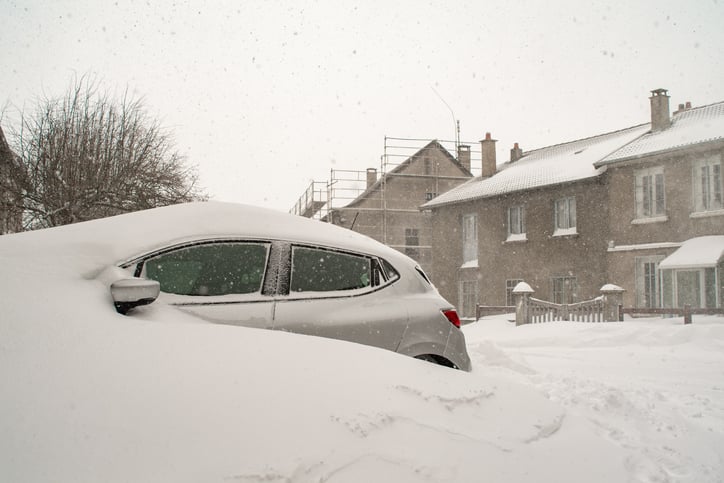
Concrete is resistant to ice, which is vital in freezing temperatures. If damage occurs, concrete walls are easy to repair, making the need to rebuild less likely.
Another excellent option is treated wood. You often see log cabins in winter scenes for a good reason — the material is a fantastic insulator, preserving the interior’s integrity. However, the stain used must be moisture resistant. Certain preservatives can also ward off insects, making the wood resistant to infestation and rot.
Waterproof sealing around the home is essential to keeping out snow and ice. Having a slanted roof is also crucial to keep snow from piling up and causing a cave-in.
The problem is poured concrete can be much harder to source and price than more traditional home-building materials. There are also fewer contractors building complete homes with the material. Lenders may be less willing to embrace nontraditional construction methods, especially if they know little about them. Homeowners might hesitate to try a concrete home, as they aren’t used to seeing them and don’t know much about them.
Many may not like the cabin aesthetic of wood homes, though paint and siding can make it look traditional. Others fear the maintenance necessary to keep wood water- and bug-resistant.
The Role of Building Codes in Rebuilding Smarter
FEMA categorizes state building codes based on their preparedness for possible natural disasters. The most recent report shows 39 states are in the lowest preparedness category. Nineteen states received a score of zero, including Louisiana and North Carolina — areas prone to disasters.

There’s an ongoing federal effort to address what these building codes lack and set homes and businesses to a higher standard of construction. Doing so can require materials and building strategies that prevent the need to rebuild repeatedly.
Conquering Rebuilding Barriers
Aside from improving building codes, there are a few ways to improve how we rebuild after natural disasters to reduce the likelihood of doing so again.
Flexible Building
FEMA’s Section 428 Alternative Public Assistance Program lets communities that receive Stafford Act funding argue whether or not a structure should be rebuilt. This enables people to advocate for rebuilding homes and businesses with inadequate protection. The flexible building method allows people to rebuild damaged buildings with smart building techniques.
Education
There’s an overall lack of emergency-preparedness education across the country. A survey found 40% of people are “barely covered,” with non-specific plans to stay safe and rebuild. Thirty-nine percent of respondents were “good enough” and had a more specific — if flawed — emergency plan. Only 5% were “super planners” with thorough knowledge and strategies for potential natural disasters.
Sixteen percent of the participants were “avoiders” who didn’t want to think about potential emergencies. By spreading the proper education in an alert, non-anxious way, we can improve people’s planning to build back smarter after a natural disaster.
Dispositional Optimism
A common cause of not rebuilding smarter is dispositional optimism. This psychological state preserves mental health after a tragedy like a natural disaster. It’s the belief that good things will happen no matter what.
This mindset can stop people from taking suitable precautions with their homes or offices after the event. Unlike some tragedies, a person living in a vulnerable area will likely experience multiple natural disasters, making this approach dangerous. By spreading awareness about this phenomenon and encouraging mental health care after natural disasters, we can help break through dispositional optimism and build back smarter.
Changing How We Rebuild After Disaster
There are many reasons we aren’t rebuilding smarter after natural disasters. However, with the right education, training and government changes, we can create homes and people that resist the harshest of storms.
This is a guest post written by Rose Morrison, managing editor of Renovated.com .